Take a bite at life! With caution...
A world-renowned, iconic electronics brand logo illustrates a bitten apple, thus implies taking a bite at, chewing on something. Being key mechanics that allow us to eat, hence survive, proper mastication is clearly very important and poor chewing, perhaps because of neglecting oral care, can lead to health problems.
Sometimes, carelessly taking a bite at something we would normally consider safe to chew can also be a source of trouble. It happened to me recently! I tossed a seemingly harmless peanut into my mouth and chewed on it, just to instantly feel a sharp fit of pain in one of my molars. Most likely, the tooth had been in a bad shape for some time already - obviously I had no clue about it - and the peanut simply gave it the final blow that cracked it open. What followed was the usual process of taking painkillers, antibiotics and ending up in a dentist’s chair.
Today, dental care is a normal routine of our everyday life. We wash our teeth every morning and evening, often after each meal. Visits to the dentist are scheduled on a regular basis and shop shelves are crammed with all sorts of products for oral hygiene. Not surprisingly, dental care as we know it is a fairly recent accomplishment.
Still in the 60s, people ended up at the dentist when the damage was almost irreparable and the dental care received usually led to a bleak empty space in the mouth that normally would not receive futher care, thus you just stayed with the unsightly gap. We should also add that teeth were not bombarded by the same amount of sugars included in our diet today, certainly because of much more sober, and probably healthier, diets in the past.
With the advent of television, and commercials, toothpaste started to gain popularity and washing teeth quickly became a personal care routine. One might recall a few of those commercials, like the popular Colgate Dental Cream with Gardol, which claimed to "clean your breath and guard your teeth".
Nobody knew what “Gardol” really was, nor did anyone really bother to know.
What was Gardol then? Well, here’s a bit of background. Gardol was sodium lauroyl sarcosinate — the anionic surfactant derived from sarcosine, a substance found in spaghetti and macaroni pasta. Gardol was a clever marketing message of, probably, combining the words “Guard” and “All”, relying on the phonetic combination to drive home the idea of the protective quality of this chemical compound. In our society, chemicals don’t sell, hence the claim "Gardol with sodium lauroyl sarcosinate" would obviously have never worked.
Another fine example of a successful toothpste commercial was the one that, back in the 60s again, combined a Durban’s toothpaste with the popular song Barbara Ann by the Beach Boys, conveying to the public the idea of happy young Americans, with broad, very white smiles as they engaged in leisure activities to the sound of a popular tune.
Undoubtedly, mass commercial communication has had a great influence in the development of healthy oral hygiene in the population, with all due respect to those opposing any form of advertising as a matter of principle. But what was the situation like before the advent of advertising?
In the movie Shakespeare in Love, thus in Elizabethan times, Gwyneth Paltrow (aka Viola de Lesseps) is assisted by a nurse in cleaning her teeth before going to bed and she uses a pencil-sized stick with what looked like a brush on the end. It might sound rather disgusting to have to attend someone performing personal care procedures, yet in those times servants were eager to help their masters in keeping their hygiene since it was a sign of intimacy and confidence that easily led to advantages and priviliges in the housekeeping dynamics of the place they worked in.
Dental hygiene dates back to prehistoric times. Cavemen chewed on sticks to clean their teeth and even used grass stalks to pick in between their teeth. Moving closer to us, ancient Egyptians made pastes out of flowers and other vegetables to wash teeth, while the Greeks and Romans, as well as the Islamic peoples, made substances by grinding bones and other hard materials to make abrasive pastes they would then smear over teeth with some sort of tool.
The “modern” toothpaste appears in the 19th century in Great Britain. In those times, people were actually using tooth powders instead of toothpastes. Tooth powder was a combination of many ingredients that people often just made at home. Some of these ingredients included ground up chalk, brick, and charcoal. An American "recipe" also included burnt bread crumbles. Some suspicion of possible harmful side effects from these homemade toothpastes is legitimate, yet such risk comes with progress and development. Eventually, commercially made toothpastes began to replace the powder, with the first toothpastes that contained baking soda and hydrogen peroxide. 1892 sees a revolution in dental care, with Dr. Washington Sheffield inventing modern tothpaste, which he sold in collapsible tubes. Shortly thereafter, in 1896, Colgate began selling its own toothpaste that mimicked Sheffield's ready-made toothpaste and also sold it in collapsible tubes, like Sheffield. In 1955, Procter and Gamble launch their first fluoride-based toothpaste. After that, things picked up quickly and, nowadays, we have a broad choice of oral care products to choose from.
And what about toothbrushes? We need to go back to England to tell this story. In 1770, an Englishman named William Addis landed in jail for inciting a riot. He was a clever man, who wanted to keep himself presentable but did not like using the method at the time of rubbing a rag with soot and salt on the teeth. So, by hand, he carved a small brush handle from bone, then drilled holes into the bone handle and inserted animal bristles that were held in place by wire. Addis starting mass-producing his new invention after leaving prison and died a wealthy man.
The first patent for a device that would then evolve into the modern toothbrush we all use today was filed in the USA in 1857, with large-scale production triggered later on in 1885. However, in the United States, it wasn’t until soldiers returned home from World War II indoctrinated with military hygiene habits that brushing one’s teeth regularly became a widespread practice.
A bite I would instantly regret taking triggered this brief account of the history of oral care, which has told us about the development of the modern toothpaste and toothbrush. I am not aware if, across the ocean, the creators of the iconic logo depicting a bitten apple had oral care in mind when they designed it. Nonetheless, the next time someone gets your goat by calling you on the phone while you are just about to slip into your pajamas and head for your cosy bed, don’t lash out by biting your mobile phone – it might cost you dearly!

Listen!
PODCAST
Listen to the article!
Voice: William Scott Agostini
TKS Publisher staff







